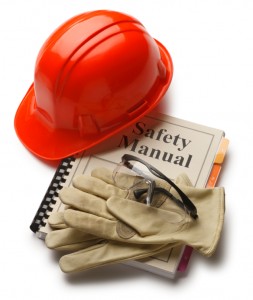 Though chemicals have helped the world in a huge way, when it is used wrongly and with abuse it could get back to the world in a form of huge hazards. Even in the production, transportation, or handling itself of the chemicals already impose a great danger to the environment and to people who are directly involved in handling it. Which is why the GHS was formed, or also known as the Globally Harmonized System of Classification and Labeling of Chemicals. So with the help of GHS, chemicals are classified accordingly based on the severity and effects of its hazards. With the GHS, a harmonized communication of all the hazards is being arranged through data sheets and labels that will be placed in each chemical container that instructs how to handle the chemicals, transport them, and what to do in case of a spill or accident. The whole idea is for people to learn how to properly handle, transport, or even produce chemicals in such a way that accidents will be avoided as well as a safe environment will be kept for the whole process.
Though chemicals have helped the world in a huge way, when it is used wrongly and with abuse it could get back to the world in a form of huge hazards. Even in the production, transportation, or handling itself of the chemicals already impose a great danger to the environment and to people who are directly involved in handling it. Which is why the GHS was formed, or also known as the Globally Harmonized System of Classification and Labeling of Chemicals. So with the help of GHS, chemicals are classified accordingly based on the severity and effects of its hazards. With the GHS, a harmonized communication of all the hazards is being arranged through data sheets and labels that will be placed in each chemical container that instructs how to handle the chemicals, transport them, and what to do in case of a spill or accident. The whole idea is for people to learn how to properly handle, transport, or even produce chemicals in such a way that accidents will be avoided as well as a safe environment will be kept for the whole process.
The GHS usually requires that hazard statements with a code ‘H’ and then it will be followed by three digit numbers. The code is for reference purposes and each one has a corresponding translation that would say what it actually means, along with all the safety data sheets with it and other important information. All the data that was included in the data sheets and labels were all obtained after a series of tests and research that are done by the experts to ensure that all data is correct and effective.
Physical hazards, according to the imposed system, are those chemicals that explode, catch on fire, oxidize, self-react, self-heat, and those that are pyrophoric and corrosives. Those that catch fire and inflame in air are flammable gases, some cases of solids, and most of the time aerosols. Those gases that combust and catch fire in the presence of oxygen are called oxidizing gasses.
Gasses that when applied enough pressure, explodes, are also classified as chemicals that result to physical hazards because the blow is strong enough to put a huge damage in the environment and at the same time it harms people within radius. There are also flammable liquids and solids alike that when they get ignited even with minimal source of fire will then ignite right away. Further discussion of this and all of the mentioned above are included in the HazCom 2013 training.
In the end, the GHS is not only a great way to manage the chemicals in a harmonized and systemized way but it also ensures that people that have close contacts with chemicals are safer and secure. So when handling chemicals, it is important that one should check for these GHS data sheets before using it. These things surely have been tackled in your GHS training.
